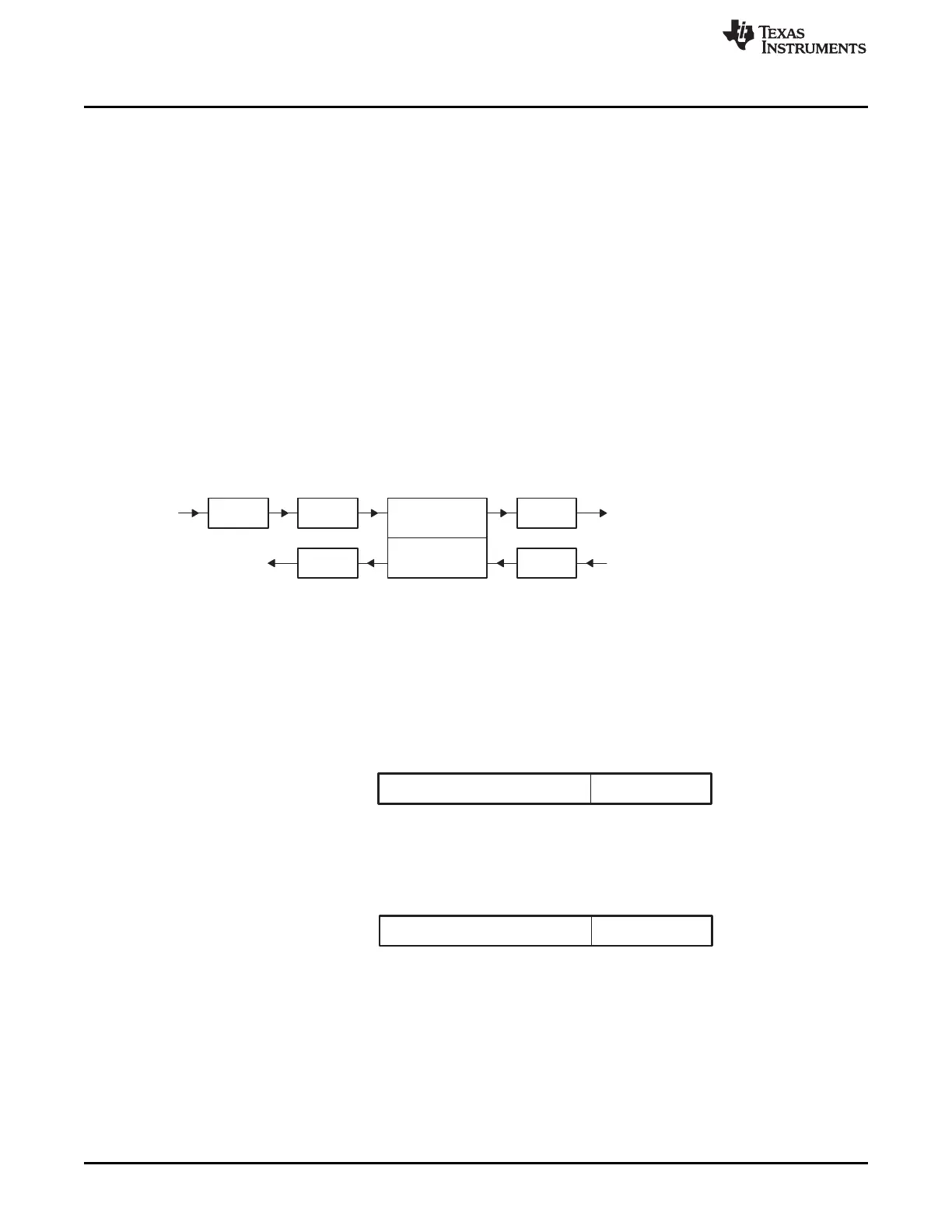000
2-0
Value
15-3
A-law format in DXR1
µ-law format in DXR1
00Value
1-015-2
From CPU or DMA controller
DXR1
To CPU or DMA controller
DRR1
16
16
DX
8
8
XSR1
Compress
Expand
DR
RBR1RSR1
McBSP Operation
www.ti.com
662
SPRUI07–March 2020
Submit Documentation Feedback
Copyright © 2020, Texas Instruments Incorporated
Multichannel Buffered Serial Port (McBSP)
12.3.2 Companding (Compressing and Expanding) Data
Companding (COMpressing and exPANDing) hardware allows compression and expansion of data in
either μ-law or A-law format. The companding standard employed in the United States and Japan is μ-law.
The European companding standard is referred to as A-law. The specifications for μ-law and A-law log
PCM are part of the CCITT G.711 recommendation.
A-law and μ-law allow 13 bits and 14 bits of dynamic range, respectively. Any values outside this range
are set to the most positive or most negative value. Thus, for companding to work best, the data
transferred to and from the McBSP via the CPU or DMA controller must be at least 16 bits wide.
The μ-law and A-law formats both encode data into 8-bit code words. Companded data is always 8 bits
wide; the appropriate word length bits (RWDLEN1, RWDLEN2, XWDLEN1, XWDLEN2) must therefore be
set to 0, indicating an 8-bit wide serial data stream. If companding is enabled and either of the frame
phases does not have an 8-bit word length, companding continues as if the word length is 8 bits.
Figure 12-3 illustrates the companding processes. When companding is chosen for the transmitter,
compression occurs during the process of copying data from DXR1 to XSR1. The transmit data is
encoded according to the specified companding law (A-law or μ-law). When companding is chosen for the
receiver, expansion occurs during the process of copying data from RBR1 to DRR1. The receive data is
decoded to twos complement format.
Figure 12-3. Companding Processes
12.3.2.1 Companding Formats
For reception, the 8-bit compressed data in RBR1 is expanded to left-justified 16-bit data in DRR1. The
receive sign-extension and justification mode specified in RJUST is ignored when companding is used.
For transmission using μ-law compression, the 14 data bits must be left-justified in DXR1 with the
remaining two low-order bits filled with 0s as shown in Figure 12-4.
Figure 12-4. μ-Law Transmit Data Companding Format
For transmission using A-law compression, the 13 data bits must be left-justified in DXR1, with the
remaining three low-order bits filled with 0s as shown in Figure 12-5.
Figure 12-5. A-Law Transmit Data Companding Format
12.3.2.2 Capability to Compand Internal Data
If the McBSP is unused (the serial port transmit and receive sections are reset), the companding hardware
can compand internal data. This can be used to:
• Convert linear to the appropriate μ-law or A-law format
• Convert μ-law or A-law to the linear format
• Observe the quantization effects in companding by transmitting linear data and compressing and re-
expanding this data. This is useful only if both XCOMPAND and RCOMPAND enable the same
companding format.

